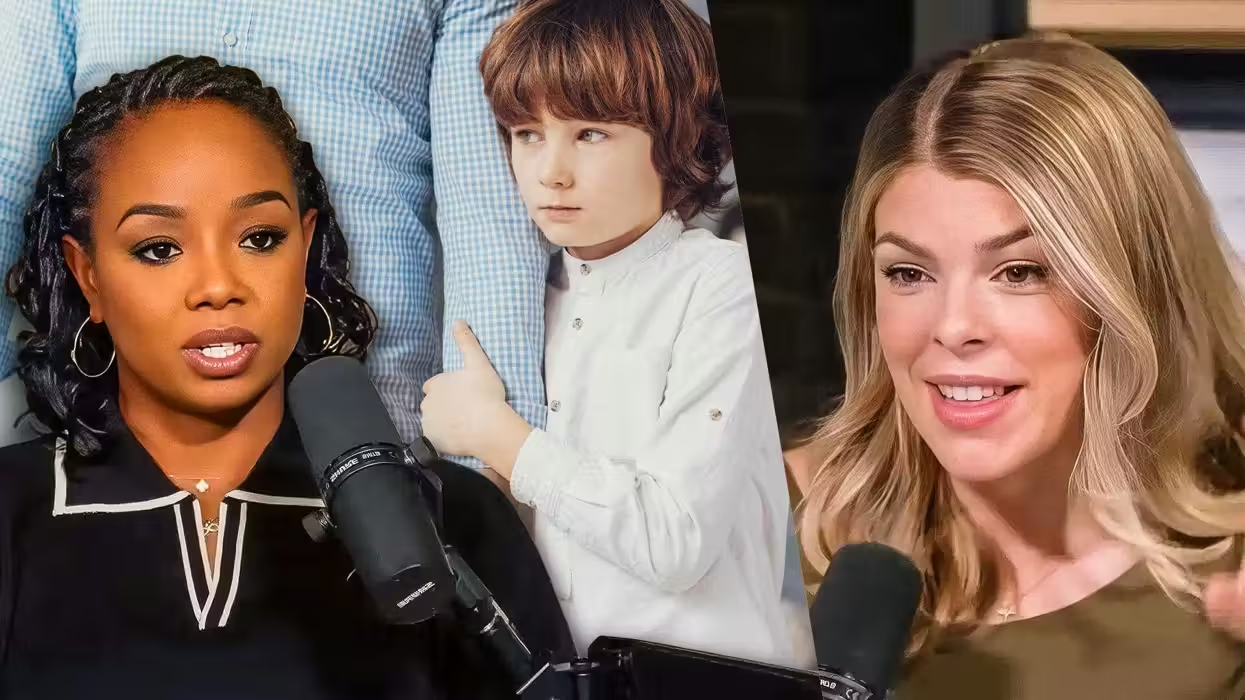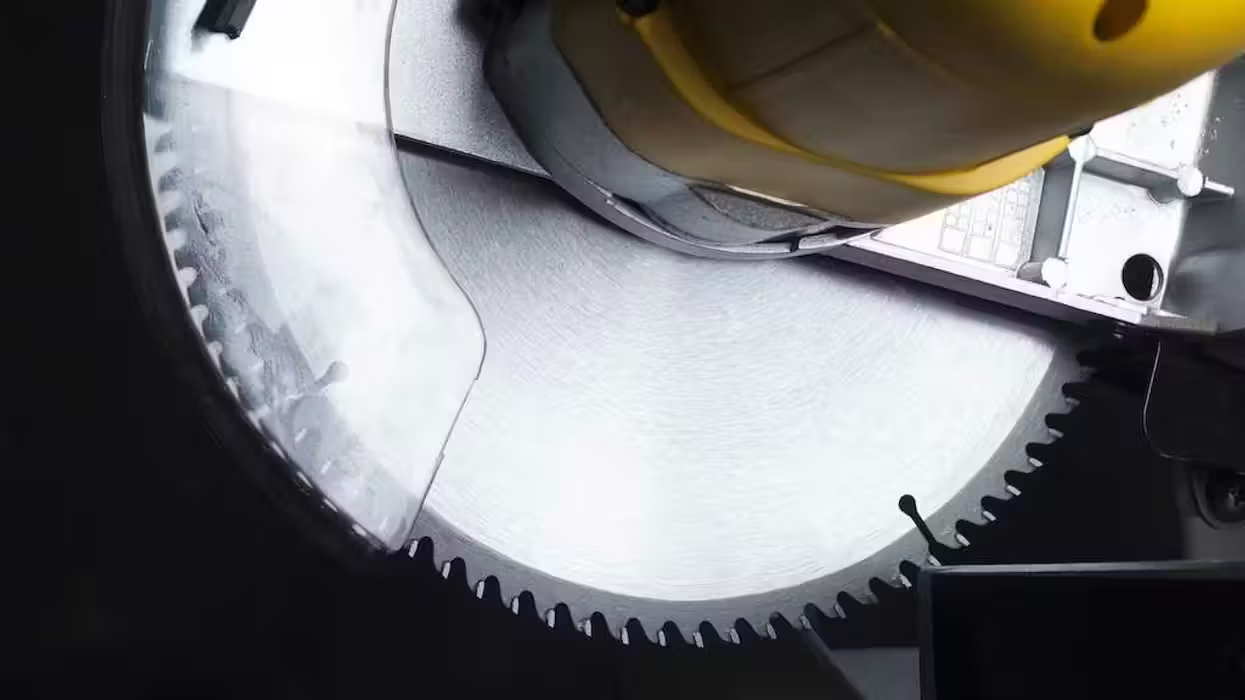
© 2025 Blaze Media LLC. All rights reserved.
One Determined Little Person': A Family Shares How Fetal Surgery Helped Improve Their Daughter's Life
July 11, 2012
"She may not do jumping jacks like you and I, but she did them."
Editor’s Note: This is the third in a five part series where The Blaze has looked into a newer treatment for children diagnosed with spina bifida. While most would have the hole exposing his or her spine closed after birth, more than a decade ago surgeries that were considered controversial at the time began where the hole was closed in utero in the hopes of reversing some of the disabling effects of the disorder.
The first results of a federally funded human trial were released in 2011, showing the success seen in the new treatment thus far. We’ve talked to families who had the elective surgery before it ever entered a formal human trial and those who more recently have had the surgery since the period trial ended. We’ve timed this series to specifically run close to Glenn Beck’s Restoring Love as the parents of children who underwent the surgery, many of whom still have some disability, want the world to know the blessing of celebrating differences.
When Bill Andrews found out the little girl his wife was carrying in the early 1990s had a severe form of spina bifida, he learned she could be paralyzed from the waist down and could have hydrocephalus -- fluid on the brain -- to a degree that could render her mentally retarded.
What he didn’t know at the time was that he and his wife, Maggie, would opt to have a surgery -- one that would seem to take a village to help get them through. It was a surgery that would allow let his daughter to not only walk but later climb rock walls and go surfing. Mary, named after her mother and Mary Magdalene, would also become a top student and a go-getter in student leadership activities.
Click through this slideshow showing Mary's growth and progress:
Saying ‘yes’
“When my wife had an ultrasound at 19 weeks, it took 45 minutes – in silence – as compared to the ultrasounds of our first two kids, which usually took about five minutes and were filled with exchanges between ourselves and the technicians. This time the technician didn’t say a word until she finished with ‘you’ll have to talk to the doctor.' We were told by the doctor then that our baby has spina bifida,” Bill recounted.
“I was laying on the table -- thank God,” Maggie said. “I was in shock. He showed us the spine and showed us where it opened. I thought I was going to faint.”
It was at the doctor’s office on a Friday that one of the staff members mentioned an experimental surgery taking place at Vanderbilt at the time. On Monday, Maggie called the university’s medical center and was asked if she and Bill could make it out to Nashville from California the following week.
For a family going through financial hardship at the time, it was a request that seemed impossible. But Bill told his wife to say ‘yes’ anyway. They would go and work it out from there.
“One of my friends came forward and said, ‘I have air miles. Here’s a plane ticket.’ Another friend said here’s money for a hotel, rental car, whatever,” Bill said.
At the time it was a $40,000 surgery with $18,000 due up front. They had already been turned down by two insurance agencies. Still, they went.
The Andrews, who have since separated, attended an evangelistic Christian church that was going to take a special offering to help them with the initial down payment for the surgery, but it would turn out they wouldn’t need it. The day before the operation, they learned the insurance company approved their coverage.
Things had worked out so far and the surgery went well, but his wife went into labor early at 25 weeks -- usually doctors try to get the child to 37 weeks of gestation before birth. When Mary was born, she weighed less than two pounds.
'Sometimes it just hurts to be different'
Now at 10 years old, Mary walks, albeit with ankle braces, and does other activities similar to children her own age -- although sometimes with her own twist.
Like many children with spina bifida, Mary finds it a condition that can be easy to hide. Bill explains she doesn't necessarily like to wear the braces on her legs, and she tries to cover them.
“She doesn’t want people to know she wears braces, but she doesn't like to wear her glasses either,” Bill said, illustrating the point.
Maggie described how her daughter wants to be a dancer -- it is a goal that isn’t impossible but she wouldn’t dance “like the other girls.” Recently seeing a group of girls in a restaurant's ladies' room after a recital, Mary had a moment.
“They all looked so cute,” Maggie said referring to their costumes. “The look on Mary’s face. Disappointment. It broke her heart to see those girls. Kids like Mary know that sometimes it just hurts to be different.”
It breaks Maggie’s heart when her daughter doesn’t get invited to things like birthday parties as well.
“Kids like her don’t get invited to those parties," Maggie said. "Most people don’t know, so they don’t even bother checking with Mom to see if it would be OK. [Mary] has disappointments, but she often holds them in." Maggie explained that when invites do come in the mail or take-home folder, she and other parents of children with disabilities celebrate these moments.
Still, like many parents with children who have undergone fetal surgery as a treatment for spina bifida, the Andrews are amazed at how their daughter progressed.
“This little girl is one determined little person,” Maggie said. "She keeps going at something until she can get it. She may not do jumping jacks like you and I, but she did them. For her, it is just the joy."
Other parents have recounted similar stories. Some credit the surgery with allowing them to avoid having to put a shunt in their child's skull to drain the excess fluid on his or her brain and improve cognitive ability. Some believe their children could be wheelchair bound today without the treatment in utero. All are amazed -- and thankful -- at each milestone that is reached like any other child without a disability, such as walking, swimming and riding a bike.
Stay tuned for the fourth installation of this five part series tomorrow where the Blaze will cover some of the struggles and harder aspects of the condition and surgery that is a treatment -- not quite a cure -- for spina bifida, the most common neural disorder.
Want to leave a tip?
We answer to you. Help keep our content free of advertisers and big tech censorship by leaving a tip today.
Want to join the conversation?
Already a subscriber?
more stories
Sign up for the Blaze newsletter
By signing up, you agree to our Privacy Policy and Terms of Use, and agree to receive content that may sometimes include advertisements. You may opt out at any time.
Related Content
© 2025 Blaze Media LLC. All rights reserved.
Get the stories that matter most delivered directly to your inbox.
By signing up, you agree to our Privacy Policy and Terms of Use, and agree to receive content that may sometimes include advertisements. You may opt out at any time.






